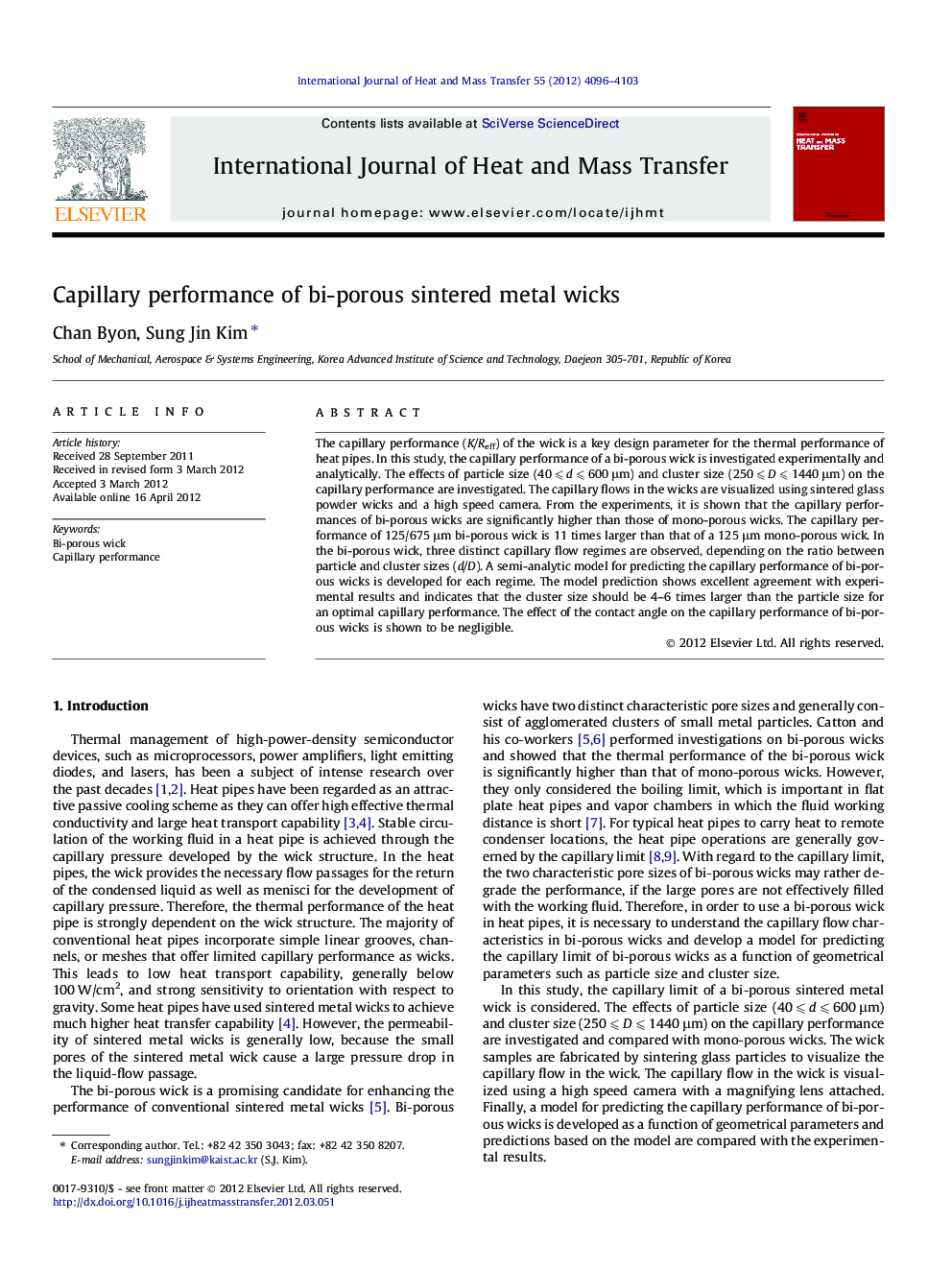| Article ID | Journal | Published Year | Pages | File Type |
|---|---|---|---|---|
| 659056 | International Journal of Heat and Mass Transfer | 2012 | 8 Pages |
Abstract
The capillary performance (K/Reff) of the wick is a key design parameter for the thermal performance of heat pipes. In this study, the capillary performance of a bi-porous wick is investigated experimentally and analytically. The effects of particle size (40 ⩽ d ⩽ 600 μm) and cluster size (250 ⩽ D ⩽ 1440 μm) on the capillary performance are investigated. The capillary flows in the wicks are visualized using sintered glass powder wicks and a high speed camera. From the experiments, it is shown that the capillary performances of bi-porous wicks are significantly higher than those of mono-porous wicks. The capillary performance of 125/675 μm bi-porous wick is 11 times larger than that of a 125 μm mono-porous wick. In the bi-porous wick, three distinct capillary flow regimes are observed, depending on the ratio between particle and cluster sizes (d/D). A semi-analytic model for predicting the capillary performance of bi-porous wicks is developed for each regime. The model prediction shows excellent agreement with experimental results and indicates that the cluster size should be 4-6 times larger than the particle size for an optimal capillary performance. The effect of the contact angle on the capillary performance of bi-porous wicks is shown to be negligible.
Keywords
Related Topics
Physical Sciences and Engineering
Chemical Engineering
Fluid Flow and Transfer Processes
Authors
Chan Byon, Sung Jin Kim,
